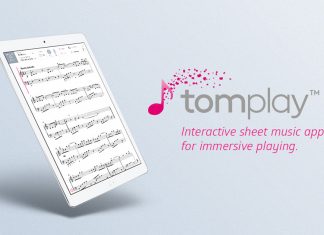
It was not long ago when shopping for a new TV was an exciting event. Driving to the store or shopping online to find a screen with a picture perfect view and exciting features at an affordable price was easy, simple and fun. With all the new technology that has surfaced a lot of the fun has been taken away. Sifting through the specs can be exhausting, confusing and time consuming. Now the problem has been solved.
Here is a quick and easy guide to some of the confusing specs that come hand in hand with purchasing a new HDTV. This guide will clear up some of the confusion and make shopping for a new TV simpler and fun once again.
Stop focusing on all the numbers, the fact is that some are important and some just are not. Follow this ranking so you can understand which numbers and features you should be focusing on to make your TV buying experience a pleasurable one.
IMPORTANT
Contrast Ratio
In basic terms this ratio relates to the brightest and darkest settings that the HDTV can display. While there are a bunch of figures and numbers that will be thrown at you, all you need to remember is that the highter the contrast ratio is, the better the quality. Use the numbers but also give the TV a sight test. Consider what lighting will exist in your house where you are placing the TV and do not fall for the perfect lighting that is used in a retail store’s showroom.
Aspect Ratio
This is the ratio that compares the width of the screen to the height. Usually this is around 4 to 3 in normal TV’s and wide screen HDTV’s offer a ratio nearing 17 to 10. If you want quality and a better DVD watching experience select an aspect ratio that is as close to 17 to 10 as possible. Wide screens are the future.
Video Inputs
This is an example of where HDTV specs can get extremely confusing. Simply put, the more input options available, the more sources you can use. Take into consideration Composite video, S Video, VGA, DVI and HDMI. Composite video is low quality but can be hooked into anything. S Video is commonly used for all VCR’s and DVD players and is even higher quality. If you want the full experience of a home theater system then you also want your HDTV to have VGA and HDMI input compatability.
Resolution
Resolution is presented as the number of pixel columsn and rows. Examples of this include 1280 by 720 and 640 by 480. The most common resolutions available for HDTV’s these days are 720p and 1080i. It wasn’t too long ago when the price tag between the two was considerably different. Now this is not the case and for the money, your best best is to go with an HDTV with 1080i resolution.
MEDIUM IMPORTANCE
Screen Size
Of course the size of the screen is important to you but it should not be a deciding factor. Do not just focus on how big the TV is and make sure that it fits in nicely within the space you are setting it up. Smaller screens can deliver great quality and your viewing area will not seem as crammed.
Built-In Tuners
While most HDTV’s will come with the appropriate tuners, you need to ensure that your TV matches the reception you plan on watching. If you want to watch TV with an antenna you need a TV tuner. If you are planning on receiving satellite TV or digital cable then you need a tuner that will match.
UNIMPORTANT
These are the specs that you should not get hung up on and should not let confuse you. They include 24p Input, Ethernet Port, USB port and Comb Filter Type. Without getting to in depth these are some of the specs that will be thrown at you by a TV salesperson but really will not affect your TV experience. Focus on the big details and do your research and you will be good to go.
There you have it, plain and simple. Now you know which HDTV specs are important when buying a new HDTV. Focus on the major details, plan around your living space, not the retail showroom and put the fun back into shopping.























